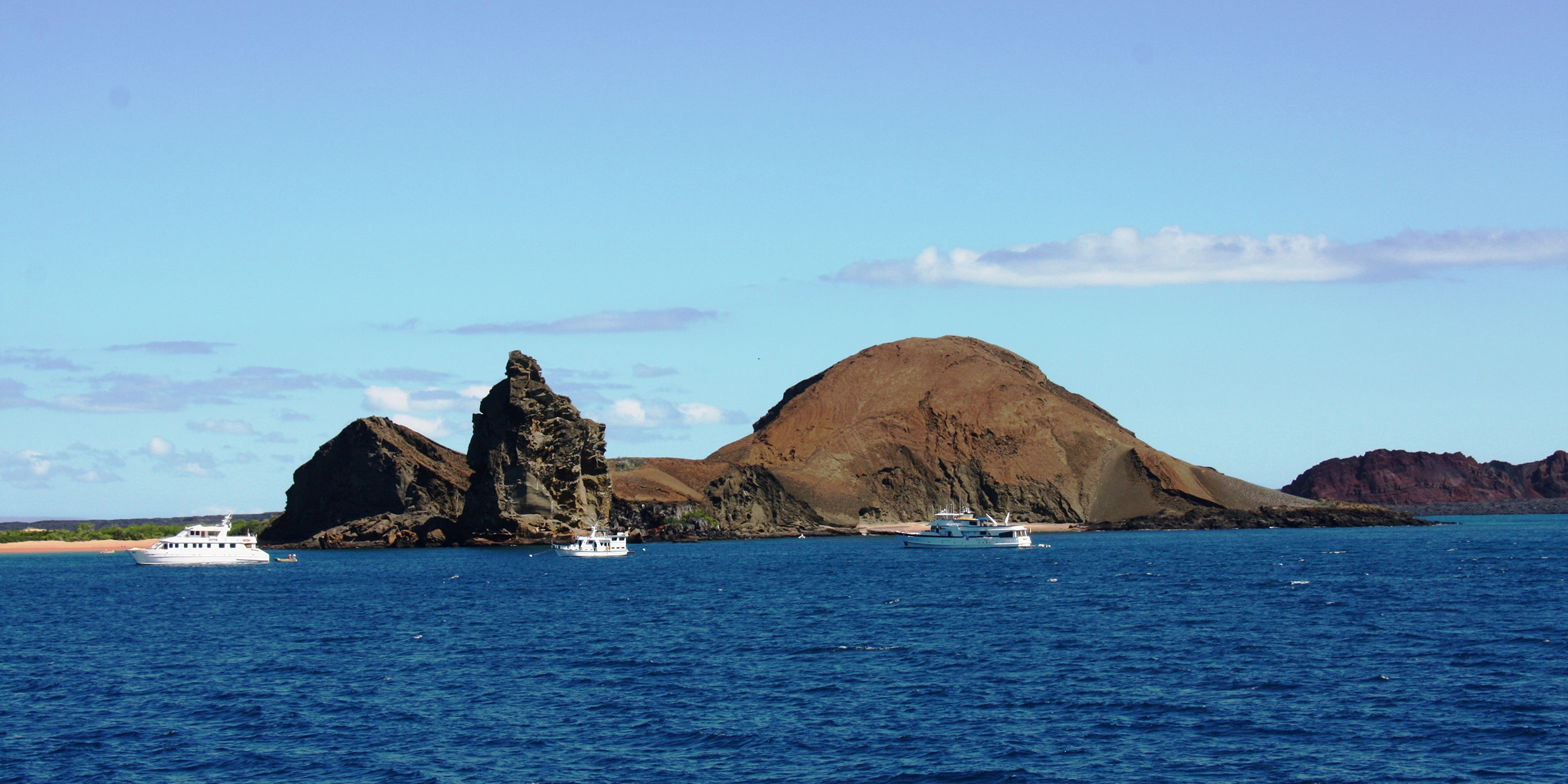Originally published 16 January 2001
On Dec. 27, 1835, young Charles Darwin, in the fifth year of his ’round-the-world voyage as naturalist aboard the HMS Beagle, posted a letter to his sister, Caroline, from New Zealand.
“My last letter was written from the Galapagos,” he began, “since which time I have had no opportunity of sending another.”
The Galápagos are a cluster of bleak volcanic islands lying astride the equator in the Pacific Ocean, 600 miles west of South America. Darwin’s observations of the flora and fauna of the islands were key inspirations for his theory of evolution by natural selection, published as On the Origin of Species in 1859.
Darwin’s letter to Caroline from the Galápagos has not been found. Let us imagine what Darwin might have written, had he the prescience to foresee the future:
My dear Caroline,
We have lately arrived in this land of volcanic Craters, having crossed from the coast of Ecuador. A Whaling Ship lies at rest not far from our present anchorage, and will presently sail for the Atlantic. I take this opportunity of telling you how we are getting on. If this were the third year of the voyage, rather than the commencement of the fifth, I dare say I would be in better spirits. I am sustained by the thought that in 10 months time I will be sitting with you by your hearth in Shrewsbury.
These islands are a little world within themselves, only recently having arisen from the sea. The exceedingly strange creatures we find here, including giant tortoises and lizards, seem to have come up from the bowels of the Earth with the lavas themselves. It will be most interesting to find from future comparison to what mainland district the beings of this archipelago are attached.
From island to island, the animals show distinct differences. Local residents can tell with certainty from which island any tortoise or mocking-thrush was brought. It is puzzling that islands lying within sight of one another should be so differently tenanted. We seem to have been brought near to that great fact — that mystery of mysteries — the first appearance of new things on this Earth.
Everything here speaks of isolation. The human presence in the archipelago is sparse, only several hundred hardy souls. Although complaining of poverty, they live a not uncomfortable life, subsisting upon sweet potatoes and bananas, supplemented by the flesh of giant tortoises. These latter carapaced beasts are a singular resource of the islands.
The numbers of tortoises, of course, have been greatly reduced. The crews of whaling ships and bucaniers have for many years relied upon these animals for fresh meat. It is said that formerly single vessels have taken away as many as 700, and that the ship’s company of a frigate once harvested 200 tortoises in a single day. One wonders how long these primeval beasts can endure such deprecations before they are extinguished from the islands.
The melancholy fate of the giant tortoises raises the broader spectre of ruin for the native flora and fauna of the islands and the waters ’round about. As I have said, the Galapagos by virtue of their recent volcanic genesis are a kind of antediluvian paradise, perhaps holding on their several shores answers to the questions posed by Lyell in his recent Principles: How do new lands become clothed and tenanted with living organisms, and how are the uniqueness of these species to be explained?
The islands are thus of great interest to the philosophical naturalist, but these same primordial qualities will inevitably attract hoards of less attentive visitors. Is it too much to imagine that in some future time people will seek out this place of origins as now they flock to visit the antiquities of Athens and Rome? And how will the creatures of these islands, so long protected by isolation from the rapacious hand of man, survive his deprecations?
But do not let me trouble your mind with the fate of these islands. In two weeks time, we sail for Tahiti, which will bring me closer to home. Give my affectionate love to my father, Erasmus, and all of you. Goodbye, my dear Caroline.
Yours.
C. Darwin
We will presumably never know what Darwin wrote from the Galápagos. As he guessed, the islands did indeed hold answers to the riddles posed by Lyell. Island biogeography is one of the most instructive fields of evolutionary science, and the Galápagos remain an unparalleled natural laboratory for field research.
The unique quality of the islands, however, is today threatened by tourism (even ecotourism), the introduction of alien species, and overfishing, particularly of sea cucumbers, which are prized in Asia for their purported aphrodisiac qualities. In recent weeks, long-simmering conflict between local fishermen and scientists at the islands’ Charles Darwin Research Station has escalated into violence, mitigated only by the intervention of special forces of the Ecuadoran Navy.
In few places on the planet has the tension between conservation and exploitation reached a more dangerous phase. Darwin’s “little world within itself” may not long maintain its illuminating recapitulation of the long first days of creation.



